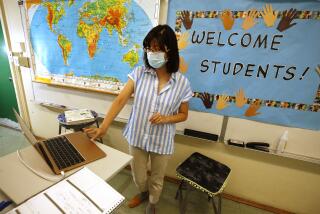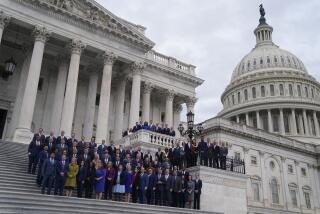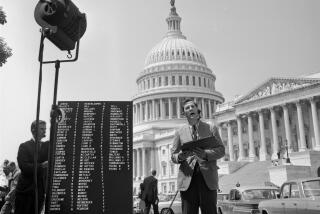In Jefferson’s footsteps
IN THE EARLY AFTERNOON of July 4, 1776, church bells rang out in Philadelphia celebrating the official adoption of the Declaration of Independence by the Continental Congress.
Of course, the work of establishing the republic was not finished on that July day. Indeed, the nation “conceived in liberty and dedicated to the proposition that all men are created equal” -- to use Abraham Lincoln’s words -- will always be a work in progress.
The founders knew this too. By the summer of 1818, their generation was passing away. The survivors fretted about the future of their legacy and whether the republic would endure. They believed that each new generation must be enlightened by the principles of liberty and prepared to fight for the rights that had been won.
For all of the founders -- and especially for the author of the Declaration of Independence -- education was the key.
As early as 1779, Thomas Jefferson had written a bill in Virginia proposing a system of public education and arguing that history should be studied by all citizens. In 1817, he again proposed a system of free public education for the state and the establishment of a public university.
His attempts met with failure -- except the last. The Virginia Legislature deemed universal public education too costly and unnecessary, but it did authorize the creation of a university and appointed a commission made up of 24 prominent Virginians, including Jefferson, to propose a location for it. The commission’s members included two former presidents (Jefferson and James Madison) and then-President James Monroe. Jefferson spent the summer of 1818 promoting his vision for the university and for education in general.
To escape the sultry heat of the summer in central Virginia, the commission convened in the town of Rockfish Gap in the Blue Ridge Mountains. Jefferson came prepared and quickly persuaded the commission to site the new university in Charlottesville, near his home in Monticello, where he could keep an eye on its development. Before the commission adjourned, Jefferson agreed to write up its findings. This was soon published as the “Rockfish Gap Report.”
In the report, Jefferson again proposed a system of publicly funded elementary education that would ensure that all citizens knew their rights and their duties to community and country. He wanted students of higher education to be well-versed in political theory, have a strong knowledge of law and government and have the skills to reason and debate the issues. Among other things, he wanted quality history and civic education.
Jefferson’s university was built, but the Virginia Legislature again ignored the recommendations for a universal education and curriculum. Only later was a system of public education put into place around the country.
So how is Jefferson’s vision for a sound history and civic education doing today?
In California, we have a comprehensive, history-driven social studies framework and standards for all grade levels. Every high school student must take three years of social studies, including a U.S. government course, to graduate. On the surface, things look good.
But in truth, social studies is no longer a priority in schools and has not been for some time. Most recently, because of the national No Child Left Behind mandates and the school accountability system, language arts, math and science are emphasized. Resources for history/social science in terms of professional development, materials and even instructional time are scarce.
This is particularly true at low-scoring elementary schools serving underrepresented student populations, where instructional time for social studies has been greatly diminished. A cruel irony, really: those least empowered and most in need of the knowledge and skills of effective citizenship and advocacy are the least likely to be exposed to them.
Recent studies demonstrate that our nation and state are paying a price for this neglect. The California Survey of Civic Education conducted last year demonstrated that despite taking a course in U.S. government in the 12th grade, graduating seniors’ knowledge of the structures and functions of government and of current political issues is very weak. Students averaged only a little over 60% correct on a test of their civics content knowledge, a low “D” on typical grading scales.
The survey also revealed that today’s graduates are not inclined toward participatory citizenship. Less than half of high school seniors surveyed believed that “being actively involved in state and local issues is my responsibility.”
Given these findings, it should be no surprise that young people’s trust in government is appallingly low. Only 33% of high school seniors said they trusted “the people in government to do what is right for the country,” and only 28% agreed with the statement: “I think that people in government care about what people like me and my family need.”
It is difficult to fault young people for these views and attitudes, and, in truth, a survey administered to adults might well bear similar results. Given the daily fare of political scandal, partisan nastiness and negative campaigning, why would young people be inclined to trust in government or become politically engaged?
Studies such as the California Survey have brought to light the need for a renewal of civic education in our nation’s schools. These days, there are groups -- such as the Alliance for Representative Democracy and the Civic Mission of Schools -- working in every state to improve civic education and preserve the social studies.
As you enjoy your Fourth of July activities, take a moment to reflect on Jefferson’s summer long ago in Rockfish Gap. Then do what you can do make the founders’ hopes a reality.
More to Read
Sign up for Essential California
The most important California stories and recommendations in your inbox every morning.
You may occasionally receive promotional content from the Los Angeles Times.










